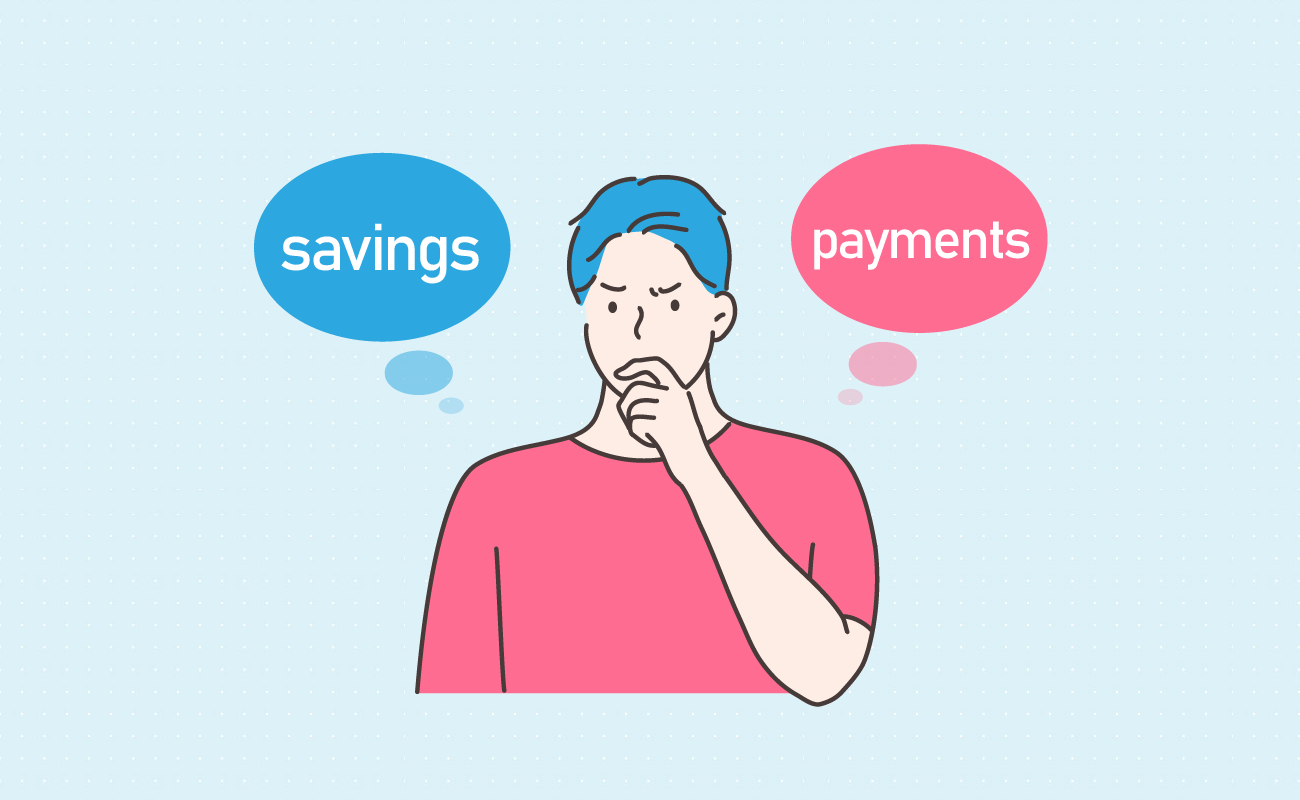Auto Loans
Affordability
Loan Payment Options
Biweekly Payments
Compare Rate & Term
Rebate vs Low Interest
Home Equity Loans
Lease or Buy
 Car Loan Rebate Calculator
Car Loan Rebate CalculatorThese calculators will help you to decide whether or not you should take a manufacturer or dealer rebate with the standard interest rate, or if you should go with a special dealer financing program offering a zero interet rate or low interest rate at the normal MSRP.
Differences between the two calculators are displayed in a table below the calculators.
| Calculator | First | Second |
|---|---|---|
| Loan Duration | must be the same | can vary |
| Vehicle Price | must be the same | can vary |
| Rebate | applied against loan OR can be invested in savings | applied against loan |
| Results | shows financial totals | shows both financial totals and monthly outlays |
Guide published by Jose Abuyuan on July 6, 2020

The prospect of deal hunting can be a daunting task for many buyers. On one hand, you might score a pretty good deal if you know where and when to go. A savvy buyer often pays less than their more up-front counterparts. This level of strategic thinking can get confusing. Where do you start looking for good deals?
Here’s where rebates and other incentives come in. These offers are designed to win over reluctant buyers by lowering sticker prices. In the process, motorists can save a bit of money—a win-win for everyone involved.
Rebates are, in essence, a money back offer. They return a fixed sum of money to you once you buy the car. This distinguishes them from discounts, which are percentages of the contract price. Automakers, dealers, and the federal government all provide rebates in some form:
Rebates seldom appear as a lump sum. They are instead deducted from the final price of the vehicle when you buy it. Government rebates, meanwhile, appear in your tax returns. The amount of money you save in taxes could then be used for other purposes. While you can pocket this cash, you would usually apply this to the price of the vehicle instead.
The right type of rebate can help you save a lot of money over the lifetime of your vehicle’s loan.

Some dealers offer bonus cash rebates to veterans and fresh graduates. Look around and see what rebate deals you qualify for.

There are two ways rebates can lower your car financing expenses. For most people, it’s used against the principal of the loan. Doing so reduces your monthly payments and the cost of the interest you need to pay. Cash rebates are applied to the down payment directly. Meanwhile, tax rebates are added to your loan payments.
You can also use rebates to earn back some of the money through interest. Deposit it in the bank and leave it there. These might not amount to much on the surface. But it will help reduce your vehicle loan’s net financing costs.
The purpose of rebates and other incentives is to encourage people to buy cars. Dealers sometimes use them to increase the number of sales on a specific model. Some may not be selling as much for various reasons. Incentives can entice buyers to buy a more expensive vehicle they wouldn’t otherwise consider. Thus, manufacturers often offer the biggest rebates to light trucks and luxury cars.
Other times, sales in general are slow. In economic slowdowns, car manufacturers and dealers alike will give generous incentives. These can sometimes accrue or roll over. Poor-selling models can become cheaper over time.
The federal government incentivizes specific types of cars to help achieve environmental goals. The most familiar of these are tax credits provided to electric vehicle buyers. These can soften the financial impact of buying fuel-efficient or low-emission vehicles. For the eco-conscious frugal motorist, it’s a win for the environment and their pocketbooks.

Rebates are designed to entice you to buy a car. Dealers dangle them in front of you like bait, hoping that you’d agree to the terms. Of course, dealers must make money from this somehow, otherwise they’d be out of business. If your instincts say “wait, there’s got to be a catch,” they’ve served you well. Watch out for any gotchas that might be lurking beneath the surface.
That rebate will have caveats. Sometimes, they’re egregious bait-and-switch tricks, such as this rather unfortunate incident. Two customers got hoodwinked into thinking they could save on interest. In the end, they paid more in cash. In this case, the math provided by the dealer did not match what the customers received.
Don’t be blinded by superficial savings. A deal that seems too good to be true usually is. Avoid relying solely on the numbers they present. Bring a calculator (or use ours) and crunch some of the numbers yourself. This will let you find out if the deal they’re offering is as good as it sounds.

Don’t do it all in one day. After staying too long in the dealership, you might be pressured to buy the cheapest car you can find and call it a day. If you let that get in the way, you might miss out on a lot of great deals.
You might be lucky and find a deal that offers both zero-percent financing and a large rebate. However, these situations are rare. You frequently get only one or the other. This will have grave implications on how much you’ll be spending in total.
As useful as rebates and other incentives can be, they first serve dealers to make money. Whether you save any money in the process is an afterthought at best. You’ll need to weigh in your options with care.
Rebates aren’t the only price-reduction options available to the bargain-hunting motorist. Some dealerships and manufacturers sweeten the pot with a motley collection of incentives. The right set of incentives can save you money in different ways.

As a rule, the bigger the rebate, the better the deal it is. You are, essentially, reducing the size of the principal that you need to borrow. Like other loans, you can expect the most savings when your loan terms are short. All the examples shown here reflect average prime rates. Watch out for instances where they offer rebates alongside high rates.
Suppose you go to a dealership for a Prius Prime that costs about $27,900. This would have a Federal tax rebate of $4,502, but is financed at an annual percentage rate (APR) of 4.75 percent. The dealership also offers a Toyota 86, which costs around $27,060, with a two percent APR. Both are payable within the span of five years. You then use your tax rebates as extra payments earmarked for your loan’s principal.
For this calculation, we will use the calculator above for different cars. The tables below assume that you have subtracted the 20 percent down payment from your loan. Let’s compare:
| Toyota Prius Prime ($4,502 tax rebate, 4.75% APR) | Toyota 86 (2% financing incentive) | |
|---|---|---|
| Price (minus 20% down) | $22,320.00 | $21,648 |
| Principal | $17,818.00 | $21,648 |
| Interest Paid | $2,234.64 | $1,118.46 |
| Monthly Payment | $334.21 | $379.44 |
Your total savings from buying the Prius Prime over the Toyota 86 would be about $45.23 per month. Over the lifetime of your loan, this will amount to $2,713.82.

Often, you’ll need to factor in taxes even with the rebate applied. Some states, however, do not charge you taxes on the rebates you receive from buying a car.
One of the advantages of financing interest is when the loan term lasts for more than five years. This can be helpful if all you can afford is a seven-year car loan.
For this next example, let’s use the calculator above for same-priced vehicles. Two Hyundai dealers offer a Tucson at $23,500 with two different incentives. One offers a $1,500 rebate but follows a 4.75 APR. The other offers an incentive of 2 percent APR.
| Dealer A ($1,500 rebate, 4.75% APR) | Dealer B (2% APR) | |
|---|---|---|
| Price (minus 20% down) | $18,800.00 | $18,800.00 |
| Principal | $17,300.00 | $18,800.00 |
| Interest Paid | $2,169.67 | $971.31 |
| Monthly Payment | $324.49 | $329.52 |
| Net Total Financing Cost | $669.67 | $971.31 |
As with the last time, the rebate is a better deal. You gain a total savings of $301.64 through the life of your loan. But what if both dealers instead offered a seven-year term?
| Dealer A ($1,500 rebate, 4.75% APR) | Dealer B (2% APR) | |
|---|---|---|
| Principal | $17,300.00 | $18,800.00 |
| Interest Paid | $3,069.12 | $1,362.33 |
| Monthly Payment | $242.49 | $240.02 |
| Net Total Financing Cost | $1,569.12 | $1,362.33 |
The second dealer’s offer now seems better by comparison. This lets you save $206.79 in financing costs over the rebate.
Rebates aren’t created equal. In general, the more expensive the car, the bigger the rebate. The federal government bases electric rebates on the car’s battery capacity. The best rebates, however, are those that are large relative to the price of the vehicle.
Used car dealerships often tailor their rebates to the type of car. These can vary within the model. They might have a larger rebate if they had more mileage or are in less-than-sterling condition. Be careful, lest you end up with a lemon.
A cheaper car with a small rebate would still cost you less. In this example, a used car dealer offers a $500 rebate on a slightly used Toyota Corolla Hybrid. The sticker price before the rebate is $19,757. You get the car’s loan approved at a 6.15 percent APR.
| Toyota Prius Prime ($4,502 tax rebate, 4.75% APR) | Used Toyota Corolla Hybrid ($500 dealer rebate, 6.15% APR) | |
|---|---|---|
| Price (minus 20% down) | $22,320.00 | $15,805.60 |
| Principal | $17,818.00 | $15,305.60 |
| Interest Paid | $2,234.64 | $1,118.46 |
| Monthly Payment | $334.21 | $296.97 |
By buying the cheaper used car, you would have saved a whopping $2,234.51 in total payments.
A common financing incentive found in dealerships today is the zero-percent interest option. These are always financed in-house. Banks gain nothing from no-interest payments. In actuality, dealers who offer zero-percent interest add a markup to the vehicle’s price. You might save some money from zero percent financing compared with the rebate. It all depends on how much principal the rebate pays for.
Let’s assume that you are at a Chevrolet dealership. It offers zero-percent financing and a $1,000 cash-back rebate on Chevy Impalas, but not both. The dealer’s price for the Impala is $31,620 through regular financing, but $33,500 through zero-percent financing. Both are available with a 60-month term.
| Option A ($1,000 rebate, 4.75% APR) | Option B (0% APR) | |
|---|---|---|
| Price (minus 20% down) | $25,296.00 | $26,800.00 |
| Principal | $24,296.00 | $26,800.00 |
| Interest Paid | $3,047.08 | $0.00 |
| Monthly Payment | $455.72 | $446.67 |
In this case, the zero-interest option is the somewhat better deal. Over the course of the payment term, you’ll get to pay $9.05 less in monthly interest. This will save you over $543.08 over the course of your loan term.

In all these examples, you add your rebate to the down payment or the principal. This reduces the principal of the loan and lowers your interest costs. Even if you have a high rate, your monthly payments would be lower because of this. Instead of adding to your price, some dealers give you the option of receiving the rebate as a check.
Once that option appears, you might wonder what happens if you stashed that money. Let’s go back to the Hyundai dealership example. Now, instead of adding the money to your principal, you went ahead and received that money. You transfer it to your bank, which has a savings APR of about 2%.
Assuming your federal and state tax rate combined is 30%, here’s what you stand to earn:
| Dealer A (Save the Money) | Dealer A (Add to Principal) | Dealer B | |
|---|---|---|---|
| Principal | $18,800.00 | $17,300.00 | $18,800.00 |
| Interest Paid | $2,357.80 | $2,169.67 | $971.31 |
| Monthly Payment | $352.63 | $324.49 | $329.52 |
| Interest Earned (After Taxes) | $155.72 ($109.00) | – | – |
| Net Total Financing Cost | $748.79 | $669.67 | $971.31 |
All in all, the rebate will save you $222.52 over the two percent financing option thanks to the interest you’ve made. You would’ve saved an extra $79.12 (and get the lowest monthly payments) if you added that money to your principal. To learn how this applies to your other debts, check our guide on our debt investment calculator.
Rebates look impressive with all those zeroes. But they might be much smaller than single-digit discounts. A five percent discount might not seem much compared with a $1,000 rebate, but looks can be deceiving. The discount might save you more money on principal payments, depending on the price of your car.
Let’s go back to the Chevy example. The dealer also has a six percent discount on the contract price for a trade in. We’ll assume both share a 60 month term and 4.75 percent APR. Here’s what you’ll be getting:
| Option 1 ($1000 rebate, 4.75% APR) | Option 2 (6% discount, 4.75% APR) | |
|---|---|---|
| Price | $31,620.00 | $29,772.8 |
| Price (20% down) | $25,296.00 | $23,824.24 |
| Principal | $24,296.00 | $23,824.24 |
| Monthly Payments | $455.72 | $446.87 |
Through a six percent discount, you’ve paid $8.85 less on your monthly payments. That’s $530.93 in total savings over the life of your loan. Not bad for a small number.

The best rebates are those that can be stacked on top of other incentives. If you get a rebate and a low (or zero) rate, you can save a lot of money in financing your vehicle. Look around for dealerships that offer this option. A car that was out of your price range might become affordable.

If you already have a car in mind, check the manufacturer’s website if it comes with a rebate. Brands often post new rebates each month. Sometimes, they allow the same rebates to roll over month after month. Look around for good deals and crunch the numbers on your potential savings.
Give bargaining your A-game. If you can find a way to reduce your rates or your principal, do so. Throughout the negotiating process, treat the incentives as a given. If you negotiate for a lower price, add the rebate to that. When you’re done, you would’ve earned a much greater discount. You’ll save even more when you choose several dealers at once.
Rebates and other incentives aren’t available for all motorists. To qualify, you often need to have a good credit rating and a long credit history. Do your research before applying for any dealership’s rebate or incentive program. If you believe you have a good chance of qualifying, go for it.

To save time, get pre-approved for a reasonable car loan. This way, you’ll have something to fall back on when you do not qualify for any of the available incentives.
Buying the right car isn’t only about hunting for bargains. It’s also finding the right car for your needs and budget. Check out our guide on our car comparison calculator.
Jose Abuyuan is a web content writer, fictionist, and digital artist hailing from Las Piñas City. He is a graduate of Communication and Media Studies at San Beda College Alabang, who took his internship in the weekly news magazine the Philippines Graphic. He has authored works professionally for over a decade.